-
BackX
-
Components
-
-
Category
-
Semiconductors
- Diodes
- Thyristors
-
Electro-insulated Modules
- Electro-insulated Modules | VISHAY (IR)
- Electro-insulated Modules | INFINEON (EUPEC)
- Electro-insulated Modules | Semikron
- Electro-insulated Modules | POWEREX
- Electro-insulated Modules | IXYS
- Electro-insulated Modules | POSEICO
- Electro-insulated Modules | ABB
- Electro-insulated Modules | TECHSEM
- Go to the subcategory
- Bridge Rectifiers
-
Transistors
- Transistors | GeneSiC
- SiC MOSFET Modules | Mitsubishi
- SiC MOSFET Modules | STARPOWER
- Module SiC MOSFET ABB’s
- IGBT Modules | MITSUBISHI
- Transistor Modules | MITSUBISHI
- MOSFET Modules | MITSUBISHI
- Transistor Modules | ABB
- IGBT Modules | POWEREX
- IGBT Modules | INFINEON (EUPEC)
- Silicon Carbide (SiC) semiconductor elements
- Go to the subcategory
- Gate Drivers
- Power Blocks
- Go to the subcategory
- Electrical Transducers
-
Passive components (capacitors, resistors, fuses, filters)
- Resistors
-
Fuses
- Miniature Fuses for electronic circuits - ABC & AGC Series
- Tubular Fast-acting Fuses
- Time-delay Fuse Links with GL/GG & AM characteristics
- Ultrafast Fuse Links
- Fast-acting Fuses (British & American standard)
- Fast-acting Fuses (European standard)
- Traction Fuses
- High-voltage Fuse Links
- Go to the subcategory
- Capacitors
- EMI Filters
- Supercapacitors
- Power surge protection
- TEMPEST emission revealing filters
- Surge arrester
- Go to the subcategory
-
Relays and Contactors
- Relays and Contactors - Theory
- 3-Phase AC Semiconductor Relays
- DC Semiconductor Relays
- Controllers, Control Systems and Accessories
- Soft Starters and Reversible Relays
- Electromechanical Relays
- Contactors
- Rotary Switches
-
Single-Phase AC Semiconductor Relays
- AC ONE PHASE RELAYS 1 series| D2425 | D2450
- One phase semiconductor AC relays CWA and CWD series
- One phase semiconductor AC relays CMRA and CMRD series
- One phase semiconductor AC relays - PS series
- Double and quadruple semiconductor AC relays - D24 D, TD24 Q, H12D48 D series
- One phase semiconductor relays - gn series
- Ckr series single phase solid state relays
- One phase AC semiconductor relays for DIN bus - ERDA I ERAA series
- 150A AC single phase relays
- Rail Mountable Solid State Relays With Integrated Heat Sink - ENDA, ERDA1 / ERAA1 series
- Go to the subcategory
- Single-Phase AC Semiconductor Relays for PCBs
- Interface Relays
- Go to the subcategory
- Cores and Other Inductive Components
- Heatsinks, Varistors, Thermal Protection
- Fans
- Air Conditioning, Accessories for Electrical Cabinets, Coolers
-
Batteries, Chargers, Buffer Power Supplies and Inverters
- Batteries, Chargers - Theoretical Description
- Modular Li-ion Battery Building Blocks, Custom Batteries, BMS
- Batteries
- Battery Chargers and Accessories
- Uninterruptible Power Supply and Buffer Power Supplies
- Inverters and Photovoltaic Equipments
- Energy storage
- Fuel cells
- Lithium-ion batteries
- Go to the subcategory
-
Automatics
- Spiralift Lifts
- Futaba Drone Parts
- Limit Switches, Microswitches
- Sensors, Transducers
-
Infrared Thermometers (Pyrometers)
- IR-TE Series - Water-proof Palm-sized Radiation Thermometer
- IR-TA Series - Handheld Type Radiation Thermometer
- IR-H Series - Handheld Type Radiation Thermometer
- IR-BA Series - High-speed Compact Radiation Thermometer
- IR-FA Series - Fiber Optic Radiation Thermometer
- IR-BZ Series - Compact Infrared Thermometers
- Go to the subcategory
- Counters, Time Relays, Panel Meters
- Industrial Protection Devices
- Light and Sound Signalling
- Thermographic Camera
- LED Displays
- Control Equipments
- Go to the subcategory
-
Cables, Litz wires, Conduits, Flexible connections
- Wires
- Cable feedthroughs and couplers
- Litz wires
-
Cables for extreme applications
- Extension and Compensation cables
- Thermocouple cables
- Connection cables for PT sensors
- Multi-conductor wires (temp. -60C to +1400C)
- Medium voltage cables
- Ignition wires
- Heating cables
- Single conductor cables (temp. -60C to +450C)
- Railway cables
- Heating cables Ex
- Cables for the defense industry
- Go to the subcategory
- Sleevings
-
Braids
- Flat Braids
- Round Braids
- Very Flexible Flat Braids
- Very Flexible Round Braids
- Cylindrical Cooper Braids
- Cylindrical Cooper Braids and Sleevings
- Flexible Earthing Connections
- PCV Insulated Copper Braids (temp. up to 85C)
- Flat Aluminium Braids
- Junction Set - Braids and Tubes
- Steel Braids
- Go to the subcategory
- Traction Equipment
- Cable Terminals
- Flexible Insulated Busbars
- Flexible Multilayer Busbars
- Cable Duct Systems
- Go to the subcategory
- View all categories
-
Semiconductors
-
-
- Suppliers
-
Applications
- CNC Machine Tools
- DC and AC Drives (Inverters)
- Energetics
- Energy bank
- Equipment and Components for Hazardous Areas [Ex]
- Equipment for Distribution, Control and Telecommunications Cabinets
- HVAC Automation
- Induction Heating
- Industrial Automation
- Industrial Protective Devices
- Machines for Drying and Wood Processing
- Machines for Thermoforming Plastics
- Mining, Metallurgy and Foundry
- Motors and Transformers
- Power Supplies (UPS) and Rectifier Systems
- Printing
- Temperature Measurement and Regulation
- Test and Laboratory Measurements
- Tram and Railway Traction
- Welding Machines
-
Assembly
-
-
Inductors
-
-
Induction devices
-
-
Service
-
- Contact
- Zobacz wszystkie kategorie
Industrial Radiator – Role and Significance in System Cooling

A radiator is an essential component used in electronic and mechanical devices, whose main task is to dissipate excess heat energy. The radiator category includes a wide range of products that differ in shape, profile, and material. Thanks to them, it is possible to effectively remove heat from components exposed to overheating, which is crucial for the reliability of the entire system.
Aluminum Radiator and Aluminum Properties
The most common solution is an aluminum radiator. Aluminum or copper are materials that stand out for their good thermal conductivity. Aluminum radiators have a favorable weight-to-thermal performance ratio, and their profile can be easily shaped and customized. Aluminum processing allows the creation of aluminum radiators with varied fin structures, ensuring efficient airflow.
Air-Cooled Radiators – Air Cooling
Air-cooled radiators use convection, i.e., natural or forced air movement. Air-cooled radiators are divided into passive and active solutions, where a fan is used to assist cooling. An air radiator works by transferring heat from the component to the fin and then to the air. These types of industrial radiators are widely used in automation, electronics, and mechanical devices where reliable heat dissipation is required.
Aluminum Radiators – Profile and Processing
The radiator profile is crucial for thermal performance. The larger the fin’s contact surface with the air, the more efficient the heat dissipation. The production of radiators involves precise selection of aluminum profile shapes, allowing them to fit the available space in the device. Surface treatment, such as anodizing, can additionally improve thermal conductivity and protect aluminum from corrosion.
Industrial Radiator – Applications
Industrial radiators are used in many sectors of industry. They are found in automation systems, HVAC devices, electronic equipment, and mechanical constructions requiring reliable cooling. Industrial radiators are components that directly affect the lifespan of devices and work safety. Their task is to maintain a stable temperature, thereby ensuring high reliability of the entire system.
Passive Radiator – Cooling Without a Fan
Passive cooling is one of the simplest methods. A passive radiator does not use a fan but only natural air movement. These types of constructions are quiet, reliable, and require minimal maintenance. However, in the case of very intense heating, air-cooled radiators with a fan or liquid cooling systems are a better solution.
Thermal Aspect of Radiators
Every radiator is a component responsible for conducting and dissipating heat. It is crucial that it provides adequate thermal conductivity. For this purpose, aluminum or copper, materials with high thermal conductivity, are used. An effective industrial radiator can dissipate a significant amount of heat energy, preventing damage to electronic and mechanical components.
Industrial Radiators and Their Construction
Industrial radiators can be welded, cast, or made from aluminum profiles. The choice of technology depends on the requirements – some constructions require lightweight aluminum radiators, while others need radiators with high mass and mechanical strength. An important element is the fin, which increases the heat dissipation surface and enables effective cooling.
Radiator Simulation and Design
Modern radiator design uses computer simulation, which allows checking the component's behavior under thermal load conditions. Thermal performance, airflow, and convection are analyzed to ensure an effective and efficient design. Thanks to simulation, it is possible to optimize the radiator profile even before production begins.
Cooling in Automation and Mechanical Devices
In automation systems and mechanical devices, the radiator is a component that is crucial for operational stability. In many applications, aluminum radiators with specially designed profiles are used, ensuring effective heat dissipation even in challenging industrial conditions. Radiators in such systems increase reliability and minimize the risk of failure.
Air-Cooled Radiators vs. Liquid Cooling
Although air-cooled radiators are the most commonly used, in some situations, liquid cooling is necessary. Air-cooled radiators perform well in most electronic devices; however, where there is high power density and limited space, liquid cooling proves more efficient. An industrial radiator can therefore be part of a hybrid system combining both methods.
Effective Heat Dissipation – Key Importance
Effective heat dissipation has a direct impact on the thermal performance of devices. The high thermal conductivity of aluminum and copper allows rapid heat transfer to the fin, from where the energy is released into the environment. Proper industrial radiator design increases cooling efficiency and keeps components within the optimal temperature range.
Surface Treatment and Finishing
Surface treatments of radiators are a stage that increases their effectiveness and durability. Processes such as anodizing, sandblasting, or powder coating can improve the thermal conductivity of surfaces and protect aluminum from oxidation. Aluminum radiators subjected to such processes gain not only better performance but also an aesthetic appearance.
Radiator – Reliability and Lifespan
An industrial radiator determines the lifespan of mechanical and electronic devices. High cooling reliability means a lower risk of failure, reduced maintenance costs, and longer trouble-free operation. An effective radiator is not only a technical element but also an investment in the safety and durability of the entire system.
Summary
Industrial radiators are fundamental components in many industries, from electronics to mechanics. Thanks to the use of aluminum or copper, precise processing, and advanced design methods, they provide effective heat dissipation. Air-cooled radiators, passive cooling, or fan-assisted air radiators – all these solutions aim to increase device reliability and efficiency.
We invite you to explore our offer and discover solutions tailored to various needs. Contact us to learn more about industrial radiators.
Related products
Related posts
 Thermally conductive materials in power storages
Thermally conductive materials in power storages
 Measuring power and energy in electric circuits
Measuring power and energy in electric circuits
 Wentylatory przemysłowe - rodzaje, właściwości
Wentylatory przemysłowe - rodzaje, właściwości

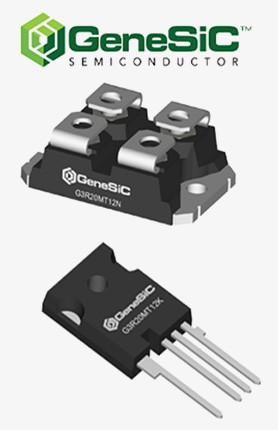
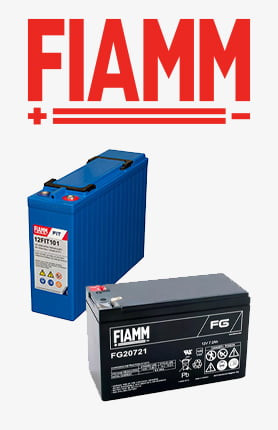
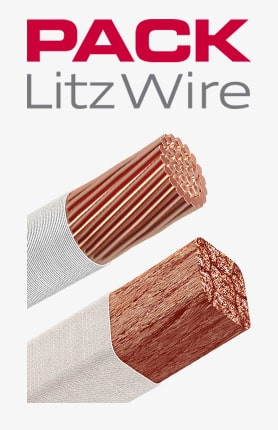
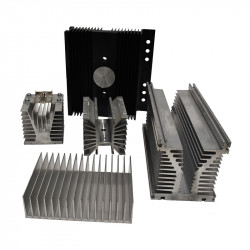
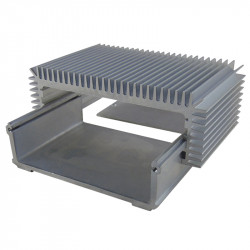
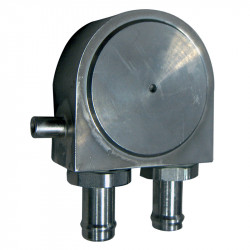
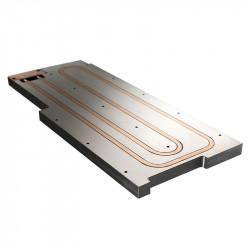
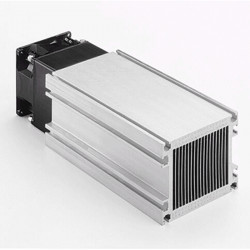
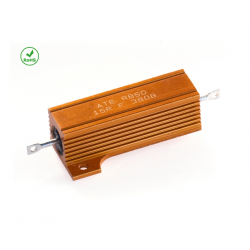
Leave a comment